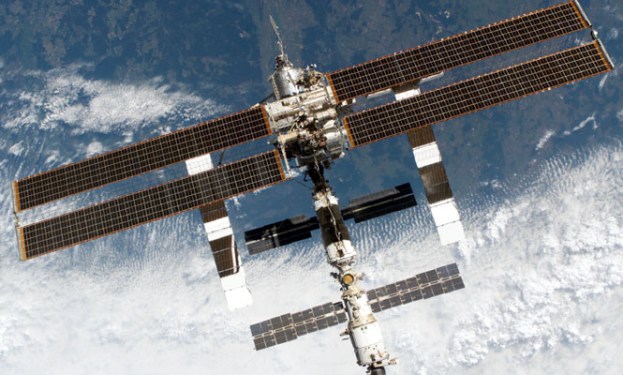 The Russian space agency has correctly identified the reasons behind the August crash of a Soyuz rocket headed for the International Space Station (pictured) and taken steps to protect the next launch, according to an independent NASA review of the incident.
The Russian space agency has correctly identified the reasons behind the August crash of a Soyuz rocket headed for the International Space Station (pictured) and taken steps to protect the next launch, according to an independent NASA review of the incident.
As we reported back on August 25, the unmanned Soyuz rocket made an unexpected return to Earth just five minutes after launch, and crashed into the Siberian desert with its payload of ISS supplies. The crash was especially notable here in the U.S., given the current reliance on the Russian space agency for travel to and from the space station now that NASA has ended the space shuttle program.
According to Space.com, the Russian space agency (Roscosmos) found that contamination of the rocket’s fuel lines or stabilizer valve was the likely cause of the rocket’s failure, and the agency is taking appropriate steps to ensure the problem does not occur again.
William H. Gerstenmaier, associate administrator for NASA’s Human Exploration and Operations Mission Directorate, presented the agency’s review of the Russian data last week to Congress during a hearing of the House Science, Space and Technology Committee.
“Roscosmos and its contractors have a plan in place to validate engines for the near-term launches including improving quality control, such as adding additional inspectors and video-taping critical actions related to component assembly,” said Gerstenmaier.
The next Soyuz rocket launch is expected to occur October 30.
Editors' Recommendations
- NASA suspends work on Space Launch System and Orion, may delay moon mission
- NASA’s Orion craft completes space environment testing ahead of lunar mission
- NASA funding new tech for accessing food and water on lunar missions
- Enjoy NASA’s re-creation of Apollo 13’s moon mission in crisp 4K
- Four proposed NASA missions could reveal unknown secrets of the solar system




